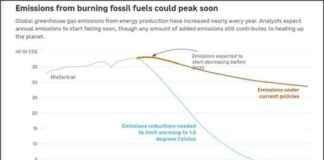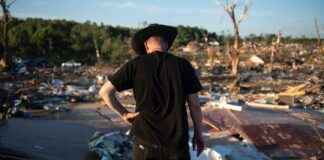The Growing Climate Insurance Crisis: Latest Data Reveals Severity
Five hurricanes wreaked havoc in the United States this year, inflicting a staggering half a trillion dollars in damages. Mountain towns along the East Coast were left in ruins by flooding, while wildfires engulfed almost 8 million acres nationwide. These disasters are not isolated incidents but part of a disturbing trend that is reshaping the insurance landscape for homeowners across the country.
Senate Committee on the Budget Analysis
An analysis released by the Senate Committee on the Budget unveiled a concerning reality: the rate at which insurance contracts are being terminated has surged in recent years, especially in states most vulnerable to climate risks. A total of 1.9 million policies were not renewed, leaving many homeowners in the lurch.
Senator Sheldon Whitehouse, a Democrat from Rhode Island and chair of the budget committee, emphasized the economic threat and affordability crisis posed by climate change during a hearing on the matter. He stressed that climate change is no longer just an environmental issue but a pressing economic concern that demands attention.
Rising Premiums and Nonrenewals
For those fortunate enough to retain insurance coverage, premiums have skyrocketed. A report from the congressional Joint Economic Committee revealed a 44 percent increase in premiums between 2011 and 2021, with an additional 11 percent surge last year. The current insurance model is under scrutiny, with a Democratic analyst from the JEC highlighting the system’s shortcomings.
State-by-State Breakdown
The JEC report provides a state-by-state breakdown of premium hikes and risk rankings linked to climate perils. Florida emerged as a hotspot for both, with annual premiums soaring by an eye-watering $1,272 between 2020 and 2023. Conversely, Michigan experienced the smallest increase at $136. The issue at hand transcends political boundaries, affecting homeowners nationwide.
Expert Insights
Economist Philip Mulder from the Wisconsin School of Business shed light on the financial implications of climate-exacerbated disasters on insurance markets. The escalating costs incurred by insurance providers and re-insurers are ultimately passed down to homeowners, leading to a vicious cycle of rising premiums and limited coverage.
Challenges and Solutions
While some experts like economist Robert Hartwig downplay the impact of climate change on insurance markets, the escalating frequency of costly natural disasters paints a grim picture. Insurers are retreating from high-risk states, leaving homeowners with limited options. State-run insurers of last resort have become a lifeline for many, but their coverage comes at a steep price.
Congressional Action
The JEC report proposes several measures that Congress could adopt to tackle the crisis, such as enhanced data collection through initiatives like the Wildfire Insurance Coverage Study Act and the introduction of the Shelter Act to incentivize disaster mitigation efforts. However, the fate of these proposals remains uncertain in light of shifting political dynamics.
Looking Ahead
As the debate over climate change and insurance markets rages on, the need for proactive measures to safeguard homeowners and bolster resilience becomes increasingly urgent. Adapting existing structures and implementing future-proofing strategies are crucial steps in mitigating risks and stabilizing insurance markets for the long haul.
The looming question of whether bipartisan support can be garnered for these initiatives remains unanswered, underscoring the complexity of the issue. Despite the political divide, the escalating climate-related disasters serve as a stark reminder that action is imperative to address the growing climate insurance crisis.














